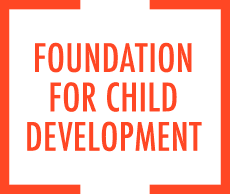https://www.fcd-us.org/the-health-and-well-being-of-young-children-of-immigrants/
Eight key themes emerge from this research of children younger than six living in families with at least one immigrant parent. Not only is the fastest growing sector of America’s child population, almost all of them (93 percent) are citizens.
One in five young children of immigrants in two-parent families lives below the federal poverty level - triple the rate for children with U.S.-born parents, new research from the nonpartisan Urban Institute shows. Twenty-two percent in the first group are poor versus 7 percent in the latter.
Although children of immigrants are more likely to be in two-parent families, the second parent is less likely to work, says Urban Institute researcher Randy Capps.
Lower wages among immigrants also partially account for the higher poverty rate of the two-parent families, says Capps, coauthor of The Health and Well-Being of Young Children of Immigrants. Even with two working parents, almost a quarter of the children of immigrants - more than twice the share for children of natives - are in low-income families (incomes below 200 percent of the federal poverty level).
The high poverty rate among young children of immigrants living with two parents means that strategies emphasizing marriage and work are not enough to improve their situations, says Capps. Work supports, such as the Earned Income Tax Credit, food stamps, and child care, and strategies that improve workforce skills, such as English-language and basic education, are the most important means of addressing their economic difficulties.
The study focuses on children under age 6 with at least one parent born outside the United States. It provides an overview of immigration trends and demographics; discusses poverty, family structure, and parental work patterns; explores parents’ educational attainment and English proficiency; examines hardship rates and government benefits; analyzes health status and insurance coverage; and reports on formal and informal child care arrangements.
Because of rapid recent immigration, children with immigrant parents make up a large and rising share of the nation’s young child population. While immigrants comprise 12 percent of the total U.S. population, children of immigrants make up 22 percent of the 23.4 million children under age 6. By 2020, almost 30 percent of all children will have one or more foreign-born parents.
Of the country’s 5.1 million children under age 6 with at least one immigrant parent, 93 percent are citizens. Some 1.3 million of these young citizens live with a parent who is an undocumented immigrant.
No matter how Congress resolves the debate over providing legal status for undocumented immigrants, Capps points out, the results will have a major impact on a large number of immigrant families with citizen children.
Greater Economic Hardship but Lower Benefits Use among Children of Immigrants
Twenty-seven percent of all young children in immigrant families are poor, compared with 19 percent in native families. The higher poverty rate of children of immigrants is associated with increased food insecurity, a greater likelihood of living in crowded housing, poorer health, and lower rates of health insurance coverage. Yet, young low-income children of immigrants are substantially less likely to receive cash welfare, food stamps, or housing assistance. They are twice as likely as children of natives to be uninsured, despite recent gains in public coverage.
Under the federal No Child Left Behind statute, schools must address the needs of low-income, Latino, Asian, and limited-English-proficient children; yet, the study shows that children of immigrants, many of whom fit one or more of these criteria, exhibit many of the risk factors associated with poor academic achievement. These children are much more likely than the children of natives to live in low-income families with limited English skills, and their parents are much less likely to have a high school education - the same factors that depress wages. Such children are also read to less regularly by their parents.
In addition, children of immigrants are less likely than children of natives to be in center-based child care, and they are substantially more likely to be in parental care. Although lower workforce participation among immigrants is one possible explanation, the other reasons for these child care patterns are not well known. Evaluations of pre-kindergarten and Head Start programs show that quality early education can benefit children’s early development and socialization, ease the transition from home to school, help children adapt to a new culture and language, provide parents with educational opportunities, increase family access to health care and other benefits, and link parents to the communities in which they live.
